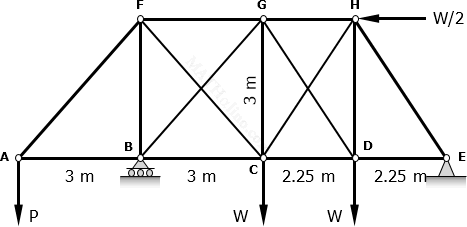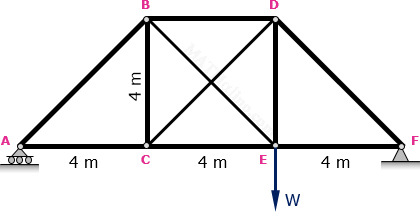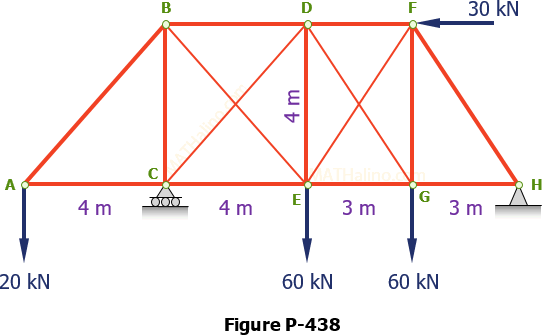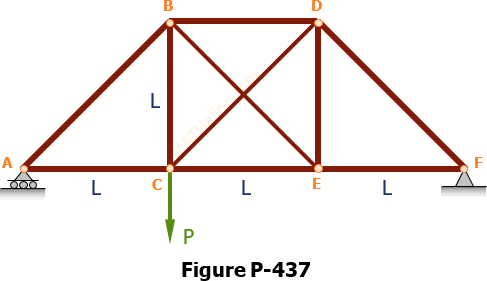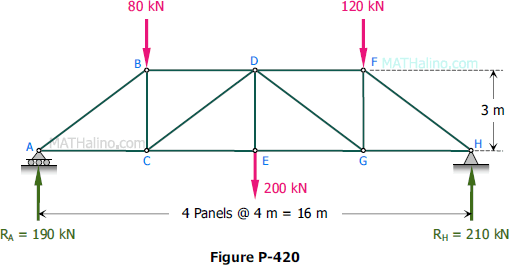Truss With Tension-Only Diagonals
Situation
Diagonals BG, CF, CH, and DG of the truss shown can resist tension only.
If W = 3 kN and P = 0, find the following:
1. the force in member CF.
| A. 4.76 kN | C. 4.67 kN |
| B. 4.32 kN | D. 4.23 kN |
2. the force in member BF.
| A. 3.2 kN | C. 3.4 kN |
| B. 3.3 kN | D. 3.5 kN |
3. the force in member DH.
| A. 2.8 kN | A. 2.5 kN |
| B. 2.8 kN | D. 2.7 kN |
- Read more about Truss With Tension-Only Diagonals
- Log in to post comments

